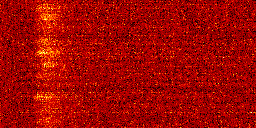The confocal microscope Leica TCS SP2 can be also used for measuring of static or slow events in the standard xy mode. Fluorescent probes are used to image specific sub-cellular structures such as the surface membrane (right image) and other organelles. Images can be acquired in series of optical slices that allow 3D reconstruction, as well as in time series. Using a right combination of fluorescent indicators, records of both types of measurements (static labeling/dynamic calcium measurement) can be correlated.
Configuration of the confocal microscope Leica TCS SP2:
- Inverted microscope DM IRE2
- Objectives 10x and 20x dry, 40x oil, 63x oil, 63x water
- AOBS, AOTF
- Scanner 1000 Hz
- 2x PMT, 1x TLD detectors
- 1x Ar laser (458, 476, 488, 496, 514 nm)
- 3x He/Ne laser (543, 594, 633 nm)
|



 contact
contact
